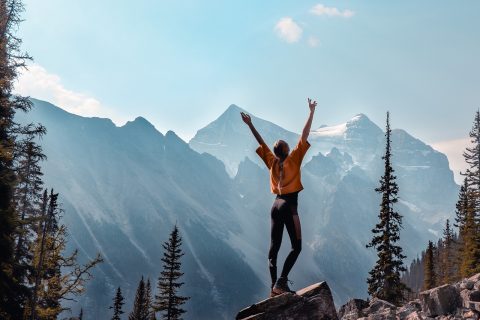After a demanding shift, doctors often find themselves in need of rejuvenation. The hustle and bustle of patient care, coupled with the weight of responsibility, can leave even the most resilient physicians feeling drained. However, amidst the chaos, there lies a sanctuary—a space for doctors to unwind, recharge, and prioritise their well-being. In this guide, we explore practical and refreshing ways for doctors to relax after their shifts, backed by data and research from leading journals, helping them find balance in the midst of their demanding schedules:
Mindful Meditation: Research indicates that just a few minutes of mindful meditation can significantly reduce stress and promote relaxation. A study published in JAMA Internal Medicine found that mindfulness meditation is associated with decreased symptoms of anxiety, depression, and pain among healthcare professionals (Chiesa & Serretti, 2009). Doctors can utilise apps like Headspace or Calm to guide them through quick, effective meditation sessions, even in the midst of a hectic schedule.
The Power of Nature: Connecting with nature has been proven to lower cortisol levels and elevate mood. A study from the University of East Anglia found that spending time in green spaces reduces the risk of cardiovascular disease, premature death, and stress (White et al., 2019). Doctors can benefit from spending time outdoors, whether it’s a leisurely walk in the park or a hike in the wilderness. Incorporating elements of nature into one’s surroundings, such as indoor plants or nature-inspired artwork, can also have a calming effect.
Creative Expression: Engaging in creative activities serves as a therapeutic outlet for stress. According to research published in the Journal of Positive Psychology, participating in creative endeavours boosts positive emotions and reduces negative ones (White et al., 2016). Doctors can set aside time after their shifts to indulge in these creative pursuits, whether it’s painting, writing, or playing music, allowing them to decompress and recharge their creative energies.
Physical Release: Exercise is not only essential for maintaining physical health but also for alleviating stress and tension. According to the American Psychological Association, regular physical activity is an effective way to manage stress and improve mood (American Psychological Association, n.d.). Doctors can incorporate short bursts of physical activity into their post-shift routine, whether it’s a quick yoga session, a brisk walk, or a high-intensity workout. Physical movement releases endorphins, which act as natural mood lifters, helping doctors unwind and feel revitalized.
Social Support: Building and nurturing strong social connections is vital for mental well-being. Research published in the Journal of Health and Social Behavior suggests that social support buffers the negative effects of stress on mental health (Thoits, 2011). Doctors can benefit from spending time with friends, family, or colleagues who understand the challenges they face. Engaging in meaningful conversations, sharing experiences, and simply enjoying each other’s company can provide much-needed emotional support and perspective. 
Tech-Free Time: In today’s digital age, it’s easy to become overwhelmed by constant connectivity. According to a study by the University of Gothenburg, excessive screen time is associated with increased stress levels and poor sleep quality (Marklund & Gådin, 2015). Doctors can benefit from unplugging from electronic devices for a designated period each day. Setting boundaries around screen time allows for uninterrupted relaxation and promotes better sleep quality, essential for overall health and well-being.
Holistic Health Practices: Integrating holistic health practices into one’s routine can enhance relaxation and promote balance. According to a review published in the Journal of Alternative and Complementary Medicine, techniques such as acupuncture, massage therapy, and aromatherapy offer holistic approaches to stress relief and can complement traditional medical care (Lindquist et al., 2019).
By incorporating these data-backed tips and tools into their post-shift routine, doctors can prioritise self-care and recharge their batteries effectively. Remember, investing in relaxation isn’t just beneficial for individual doctors—it ultimately contributes to better patient care and a healthier healthcare system as a whole. As the saying goes, “You can’t pour from an empty cup.” So, take the time to refill yours and continue making a positive impact in the lives of others.
References:
American Psychological Association. (n.d.). Exercise and stress: Get moving to manage stress. Retrieved from https://www.apa.org/topics/exercise-stress
Chiesa, A., & Serretti, A. (2009). Mindfulness-based stress reduction for stress management in healthy people: A review and meta-analysis. Journal of Alternative and Complementary Medicine, 15(5), 593-600.
Lindquist, R., Tracy, M. F., & Snyder, M. (2019). Complementary and alternative therapies in nursing (8th ed.). Springer Publishing Company.
Marklund, B., & Gådin, K. G. (2015). Psychosocial health and well-being among young Swedish men with experience of compulsory military service: A cross-sectional study. International Journal of Environmental Research and Public Health, 12(7), 7404-7415.
Thoits, P. A. (2011). Mechanisms linking social ties and support to physical and mental health. Journal of Health and Social Behavior, 52(2), 145-161.
University of East Anglia. (2019, July 4). Spending time in nature linked with good health and wellbeing. ScienceDaily. Retrieved from https://www.sciencedaily.com/releases/2019/07/190704193018.htm
White, M. P., Alcock, I., Wheeler, B. W., & Depledge, M. H. (2019). Would you be happier living in a greener urban area? A fixed-effects analysis of panel data. Psychological Science, 30(5), 641-650.
White, M. P., Alcock, I., Wheeler, B. W., & Depledge, M. H. (2016). Coastal proximity and physical activity: Is the coast an underappreciated public health resource? Preventive Medicine, 93, 139-143.
Images by FreePik